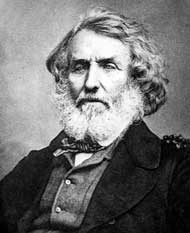Sir George Everest (/ˈiːvrɪst/; 4 July 1790 – 1 December 1866) was a Welsh surveyor and geographer. He was the Surveyor General of India from 1830 through 1843.
George Everest | |
|---|---|
 | |
| Born | 4 July 1790 |
| Died | 1 December 1866 (aged 76) |
| Resting place | St. Andrew's Old Parish Church, Hove, East Sussex, England |
| Nationality | British (Welsh) |
| Citizenship | Kingdom of Great Britain (1790–1800) United Kingdom of Great Britain and Ireland (1800–1866) |
| Known for | Great Trigonometric Survey of India |
| Scientific career | |
| Fields | Geography |
Everest was born on 4 July 1790 in Gwernvale Manor, just west of Crickhowell in Powys. He was baptised in Greenwich.
He was largely responsible for completing the section of the Great Trigonometric Survey of India along the meridian arc from southern India extending north to Nepal, a distance of about 2,400 kilometres (1,500 mi). This survey was started by William Lambton in 1806 and it lasted for several decades. In 1865, Mount Everest was named in his honour despite his objections[1] by the Royal Geographical Society. This enormous peak was surveyed by Everest's successor, Andrew Scott Waugh, in his role as the Surveyor-General of India.
Everest died on 1 December 1866 in London, England. He was 76.[2]
References
change- ↑ Wallace, Colin. "Naming Mount Everest". everest1953.co.uk. Archived from the original on 5 July 2014. Retrieved 20 February 2014.
- ↑ "Sir George Everest". infoplease.com. Retrieved 20 February 2014.
Other websites
change